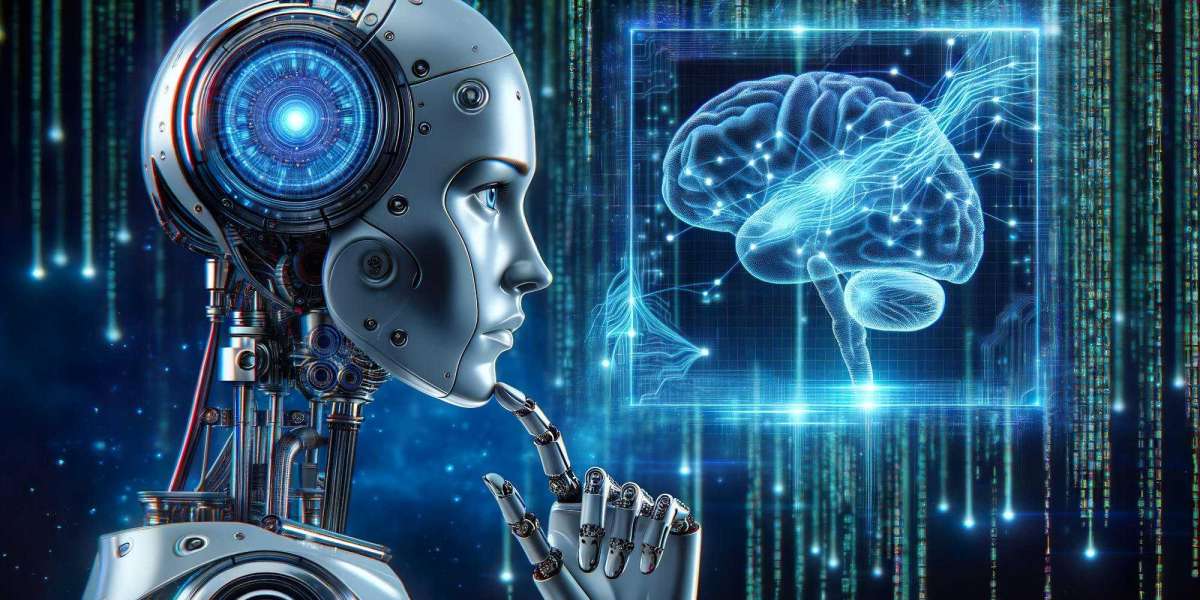Introduction
Artificial Intelligence (AI) has transformed industries, from education and business to content creation and research. While AI tools such as ChatGPT, Bard, and Claude make it easier to generate text, they have also raised concerns about authenticity and originality. As a result, detector de IA and détecteur IA tools have emerged to identify content created by AI systems.
What is a Detector de IA / Détecteur IA?
A detector de IA or détecteur IA is a digital tool designed to determine whether a given text, image, or other media was generated by artificial intelligence. These systems analyze patterns, structures, and statistical markers that are common in AI-produced outputs.
They are used in:
Education : To check if essays or assignments were written by students or AI tools.
Publishing : To ensure journalistic integrity and originality of content.
Business : To verify the authenticity of product descriptions, reports, and marketing materials.
Why AI Detection is Important
The rise of AI-generated content has created both opportunities and risks. Here's why AI detection tools are becoming essential:
Academic Integrity – In schools and universities, AI detectors help maintain fairness by preventing plagiarism through automated writing tools.
Content Authenticity – Publishers and media outlets use detectors to verify that articles are human-written, maintaining reader trust.
Legal Compliance – Certain industries require disclosure when AI-generated material is used, making detection necessary.
Preventing Misinformation – Detecting AI-generated fake news or manipulated content helps fight the spread of false information.
How AI Detectors Work
AI detectors operate through advanced algorithms and machine learning techniques. While each platform has its own technology, the core methods include:
1. Statistical Language Analysis
AI models often produce text with predictable patterns. Detectors analyze sentence structure, word frequency, and grammar usage to find signs of AI authorship.
2. Perplexity and Burstiness
Perplexity measures how predictable the text is for an AI model. AI-generated text usually has low perplexity.
Burstiness looks at variation in sentence lengths and complexity. Human writing tends to have more irregular patterns.
3. Metadata Examination
For images and other media, detectors can check metadata to see if AI tools like Midjourney or DALL·E were used.
4. Watermark and Signature Detection
Some AI platforms embed hidden watermarks in their output, which specialized detectors can identify.
Popular Detector de IA / Détecteur IA Tools
Several platforms are available for detecting AI-generated content, each with unique strengths:
1. GPTZero
One of the earliest widely known AI detectors, GPTZero is popular in education for identifying ChatGPT-written text.
2. Originality.AI
Favored by publishers and bloggers, this tool offers high accuracy in detecting both AI-written and plagiarized text.
3. Copyleaks AI Detector
Works for multiple languages, making it useful for global content verification.
4. Hive AI Detector
A versatile tool that checks text, images, and even videos for AI generation.
Strengths of AI Detection Tools
AI detection offers several advantages:
Transparency – Clearly distinguishes between human and AI-generated work.
Efficiency – Scans large volumes of content quickly.
Language Versatility – Many detectors support multiple languages, including English, Spanish, and French.
Content Filtering – Helps platforms moderate AI spam or irrelevant submissions.
Limitations and Challenges
Despite their usefulness, AI detectors are not perfect:
False Positives
Sometimes human-written text may be flagged as AI-generated, especially if the writer uses formal, structured language.Evolving AI Models
AI tools are improving rapidly, making detection harder as generated content becomes more “human-like.”Multilingual Accuracy
While many detectors claim multi-language support, accuracy can drop in less common languages or dialects.Over-Reliance
Some organizations depend too heavily on detection tools without human review, which can lead to unfair judgments.
Best Practices for Using AI Detectors
To get reliable results, it’s important to use AI detectors wisely:
Combine Tools – Use more than one detector for confirmation.
Regular Updates – Choose tools that update frequently to keep pace with new AI models.
Human Oversight – Always have a human reviewer double-check results.
Contextual Analysis – Consider the purpose and setting of the content before making a final decision.
AI Detection in Education
In schools and universities, AI detectors help teachers ensure academic integrity. For example:
Teachers can run essays through a detector de IA to see if they were AI-written.
Institutions can include AI detection as part of plagiarism checks.
Students can use detectors to self-check their work before submission.
However, educators must also teach students about ethical AI use rather than just policing it.
AI Detection in Journalism and Media
Journalistic standards require truthful, transparent reporting. Détecteur IA tools are becoming part of editorial workflows to:
Ensure opinion pieces are genuine.
Verify image authenticity.
Detect AI-created fake news articles.
This helps maintain trust in journalism at a time when misinformation spreads quickly online.
Future of AI Detection
As AI evolves, detection tools will need to become more advanced. Future developments may include:
Embedded AI Disclosure Tags – Automatically identifying AI-generated content.
Blockchain Verification – Storing authorship information in secure ledgers.
Hybrid Human-AI Review Systems – Combining machine speed with human judgment for the best accuracy.
Ethical Considerations
While AI detection is important, it must be used fairly:
Privacy – Avoid storing sensitive personal data during detection.
Transparency – Inform users when their content is being analyzed.
Non-Discrimination – Ensure detection algorithms work equally well across all languages and writing styles.
Conclusion
The detector de IA and détecteur IA are becoming essential tools in an AI-driven world. They help maintain authenticity, protect academic integrity, and prevent misinformation. However, they are not foolproof and should be used alongside human judgment for best results.



